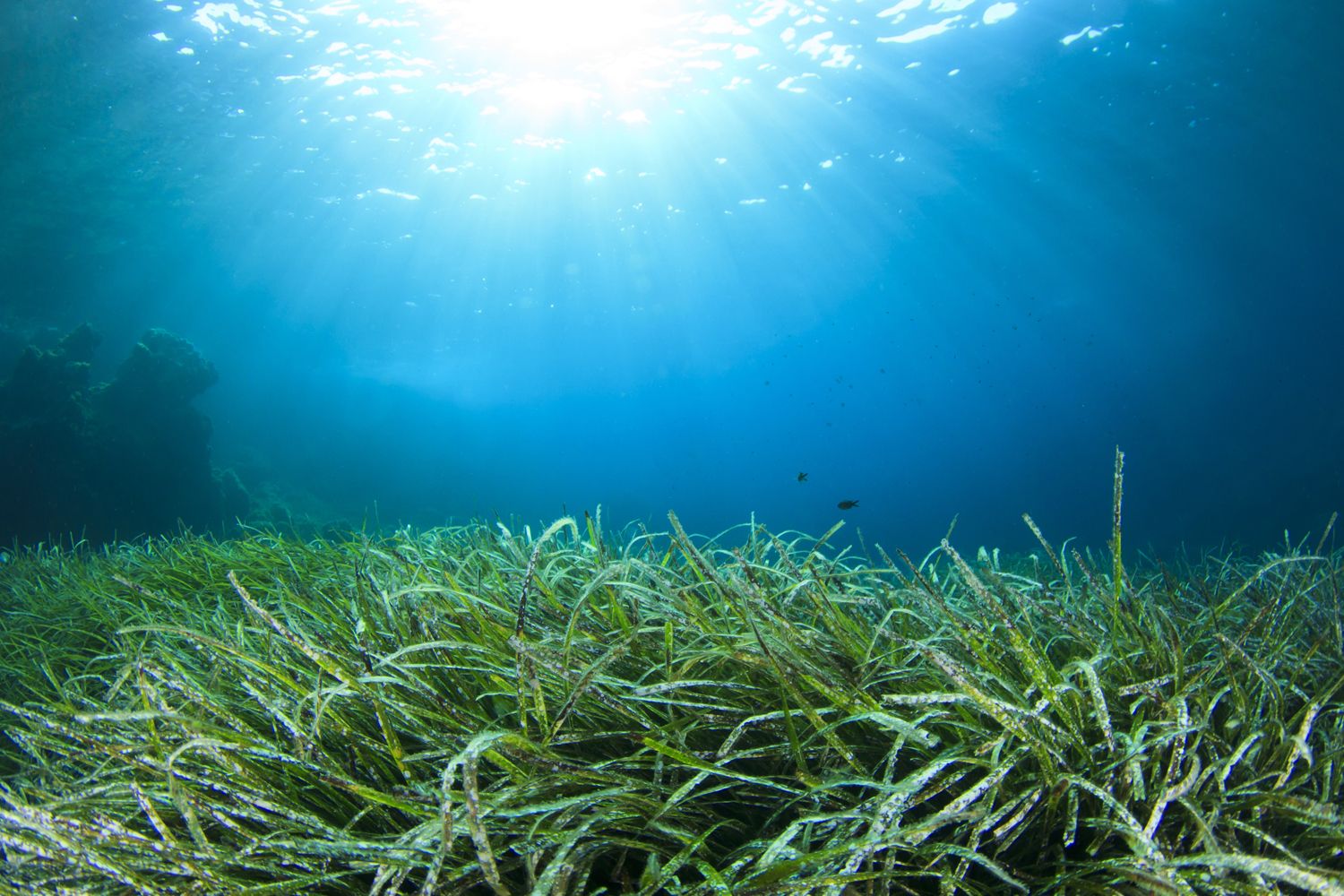On 8 June 2021, we are celebrating the United Nations' (UN) World Oceans Day. It is a day to pause and remind ourselves of the major role our ocean has in our everyday life and reflect on the impacts of our human actions on the ocean. In addition to being crucial for regulating the climate and weather by absorbing much of the anthropogenic global carbon dioxide as our biggest natural carbon sink, our ocean provides habitats for important species and critical marine ecosystems that are indispensable for biodiversity. Our ocean is also vital to the world’s economy. It is a source of food, energy, raw materials and jobs for millions of people. Analysis by the Organization for Economic Co-operation and Development (OECD) projected that the global ocean economy could double in size to US$3 trillion1 of global gross value in 2030.
Yet, our ocean is still largely treated as a public good, not as a valuable oceanic natural asset that could cease to be in supply if not properly managed. To date, existing markets do not value the flow of the many services (often called ecosystem services) the ocean provides. We have a distinct opportunity to transform our capital markets and the core operations and supply chains of the real economy in a way which recognizes and internalizes these externalities in investment and business decisions.
Science is telling us that the ocean’s health is under stress and depleting at an alarming rate2. Sadly, ocean temperatures are warming and sea levels are rising. Ocean acidification and shifting ocean currents are leading to biodiversity and habitat loss. Unprecedented coral reef bleaching and changes in migration patterns of icon species, such as whales and salmon, as well as a higher frequency of severe ocean weather events, are all too common symptoms of the fading resilience of our ocean. Often, this is further aggravated by land-based pollution, in particular agricultural run-off, chemicals, and (micro) plastics, as well as by overfishing and depleted fish stocks in many parts of the world3.

The vast potential for finance to drive ocean-friendly business practices
A healthy economy depends on a healthy ocean. The manner of economic growth increasingly matters. Over 68 percent of global GDP4 is already covered by a net zero target. Some of the world’s largest companies are setting the bar even higher with restorative strategies, pledging to become ‘carbon negative’ and ‘resource positive’.
Sustainable finance offers an approach to reframe what we value when we invest. Safeguarding our ocean’s health often requires significant adaptation of business practices across global supply chains. This comes with significant costs. Just as the public recognition of our ocean as a unique natural asset is growing, so do the calls for global capital markets to redirect private funding towards ocean positive outcomes. It is also a powerful lever to both public and private investors to contribute nature-based solutions toward the global decarbonization agenda.
Whilst the market is still nascent, there is reason to be optimistic. Over the past few years, there has been a wave of ‘ocean-friendly’ financing solutions. Whilst the ticket sizes are often still small, the variety of emerging ‘blue finance’ models have been growing steadily. Similarly, the emergence of environmental market-based incentive mechanisms for conservation management activities of our oceans, coastal and marine ecosystems have the potential to create an entirely new playing field and are now needed more than ever to sustain and safeguard our oceans natural ability as a blue carbon sink.
The sustainable valorization and management of oceanic natural asset will require an even greater degree of collaboration than the green agenda across states, and between the private and public sectors. This goes beyond traditional maritime industries, to real-economy terrestrial sectors that are reliant, or impacting on our oceans through their value chains – but perhaps don’t realize it yet.
Bringing these new market-based platforms to life at the level of scale required will require strong intermediaries with convening power across sectors, deal/transaction structuring know how and the independence to verify impact integrity and instill investor confidence. Digital technologies such as artificial intelligence, big data, blockchain and geo-spatial mapping of biological ecosystems will be a key enabler to scale the next wave of ‘blue’ financing instruments and demonstrate measurable, positive environmental outcomes to ESG investors.
A rising regulatory tide lifts all boats
The United Nations’ Sustainable Blue Economy Finance Principles5 are already underpinning and shaping banks, insurers and investors’ ability to better align their investment, underwriting and lending activities to mainstream sustainability of ocean-based sectors and promote the implementation of the UN Sustainable Development Goal (SDG) 14, Life Below Water. Similarly, over 20 financial institutions (representing 50 percent of the global ship finance portfolio) have signed up to the Poseidon Principles to integrate climate considerations into lending decisions to promote international shipping decarbonization.
Institutional asset owners like Norway’s sovereign wealth fund have also offered specific guidance towards investee companies which sets out their expectations on ocean sustainability. The fund wants the boards of companies that depend, use or affect the oceans to work on reducing the pollution their businesses creates6. With the establishment of global initiatives like the Taskforce on Nature-related Financial Disclosures (TNFD)7, we expect that corporations will receive significantly more scrutiny around their nature-related risk performance from financial investors, lenders and insurance underwriters.
How finance is catching the blue wave
Blue Bonds: a deeper blue for Green Bonds
Blue Bonds are an emerging subset of the well-established global US$1.7 trillion8 Green, Social and Sustainability Bond market landscape, drawing on similar ‘use-of-proceeds’ principles. Certifiable standards and taxonomies issued by the Climate Bonds Initiative9 are offering relevant guidance for eligible projects in marine renewable energy and water infrastructure, specifically coastal conservation and restoration activities. Another conceptual approach frequently sees ‘Blue Bonds’ funding earmarked for marine-related activities such as sustainable fisheries and aquaculture, sustainable tourism, green shipping and ports, renewable marine energy, climate change adaptation and mitigation, waste management or coastal protection and marine conservation. On the social side, blue activities relate well to employment generation through small and medium sized finance and food security.


Debt for nature swaps
In 2018, the Seychelles issued the first sovereign Blue Bond worth US$15 million to fund the implementation of a sustainable fisheries management plan to develop semi-industrial and artisanal fisheries10. The World Bank provided a repayment guarantee for one third of the principal, while the UN’s Global Environmental Facility (GEF) offered a concessional loan to help cover the coupon payments. With the support of private funders, the country then converted US$21.6 million of national debt under the world’s first ‘debt for conservation’ swap aimed at ocean conservation and climate resiliency. This created the second largest marine protected area in the West Indian Ocean, alongside the development of a marine management plan and a permanent endowment to sustain climate adaptation and marine conservation activities11.
Blue Natural Capital markets
Blue Carbon
According to the Blue Carbon Initiative12, carbon sequestration from coastal ecosystems like mangroves, tidal marshes and seagrass meadow projects (referred to as ‘blue carbon’) have the capacity to store more carbon per unit area than terrestrial forests and are beginning to be recognized as a nature based solution in the global decarbonization agenda. Despite this potential, only a few countries currently include these ecosystems in national greenhouse gas (GHG) inventories and Nationally Determined Contributions (NDC) commitments under the Paris Agreement13. Whilst there are some pilots projects taking place, standards for blue carbon have not yet been fully developed although the recently formed International Partnership for Blue Carbon has developed guidance for international and national policy making, including the financing of blue carbon projects14. Although blue carbon is still quite novel, by virtue of having the capacity to be translated into a standardized economic unit akin terrestrial carbon, it has the potential to act as the future yardstick for positive ocean outcomes in environmental markets.

Queensland Government's Reef Credit Scheme
The Reef Credit Scheme has been developed by GreenCollar, an Australian environmental market developer and investor in partnership with landholders, the Queensland Government and natural resource management organizations15. It represents a very tangible and innovative market-based solution which offers a new way to improve the quality of catchment water entering the Great Barrier Reef, the world’s largest coral reef and both an Australian and international icon.
Each “reef credit” is a tradable unit representing a quantifiable volume of nutrient, pesticide and sediment prevented from entering the Great Barrier Reef catchment. The monetary value of these credits incentivizes hundreds of landowners and managers such as sugar cane farmers and graziers located in Queensland’s Great Barrier Reef catchment to integrate sustainable land management practices into their existing operations, rewarding them with an additional diversified income stream16.
Each “reef credit” provides a measurable, audited water quality outcome, tracked against internationally recognized targets. Private buyers include government and philanthropists as well as private sector investors like HSBC, who is looking to utilize this nature-based solution to contribute to the financial institution’s own corporate environmental net-zero climate adaptation commitments17.

Get in touch
Related content
1 OECD, The Ocean Economy in 2030, 27 April 2016. The ocean economy is defined by the OECD as the sum of the economic activities of ocean-based industries, together with the assets, goods and services provided by marine ecosystems.
3 OECD, The Ocean Economy in 2030, 27 April 2016. The ocean economy is defined by the OECD as the sum of the economic activities of ocean-based industries, together with the assets, goods and services provided by marine ecosystems.
4 61% of GHG emissions and 56% of the world’s population are covered by national net zero commitments, ‘Taking stock: a global assessment of net zero targets (2021) Oxford Net Zero & ECIU.
5 United Nation’s Sustainable Blue Finance Initiative
6 Fouche, Gwladys; Sosvik Terje, Reuters, ‘Norway’s $1 trillion fund to beef up scrutiny on sustainability, ocean pollution’, 5 September 2018.
7 Taskforce on Nature related Financial Disclosure
8 Climate Bond Initiative, ‘Sustainable Debt: Global State of the Market 2020, 2020
10 World Bank, The Seychelles Achieves World’s First Sovereign Blue Bond, Feature Story, October 29. 2018
11 Case Study: Innovative Financing – Debt for Conservation Swap, Seychelles’ Conservation and Climate Adaptation Trust and the Blue Bonds Plan, Seychelles (on-going)’ (2021) The Commonwealth Blue Charter.
13 Herr, Dorothee, Landis, E, International Union for Conservation of Nature, Global Marine and Polar Programme, Nature Conservancy, US, ‘Coastal blue carbon ecosystems’, 2016
14 Blue Carbon
15 Green Collar, Reef Credit Scheme
16 Reef Credit
17 HSBC and the Queensland Government purchase world first Reef Credit, 22 October 2020


